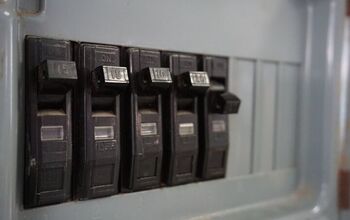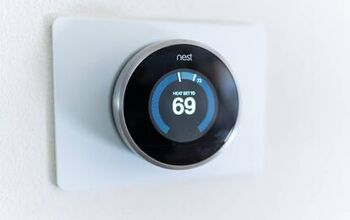How To Tell If A Neighborhood Is Safe

It’s hard to tell if a neighborhood is safe until you’ve lived there and experienced it. If you’re in the market to buy a new house in an unfamiliar area, you may not have much information about what it's like to live there. Understandably, many people struggle with how to tell if a neighborhood is safe.
The best way to tell if a neighborhood is safe is to refer to local crime statistics online and in the newspaper. Check to see if the neighborhood is well-lit and has a strong neighborhood watch group. Poor property conditions and high insurance rates are often signs that a neighborhood is unsafe.
Neighborhoods with nice sidewalks and fire lanes are safe as they’re easy for pedestrians and emergency services to access. Follow along as we explore how to tell if a neighborhood is safe so you can make the right decision.
How To Tell If You’re Moving Into A Good Neighborhood
1. Refer To Crime Statistics
Crime statistics are a good source to let you know if a neighborhood is safe. Every prospective home buyer should look into local crime statistics before they move into a neighborhood. For example, services like NeighborhoodScout provide details about specific crimes.
However, it isn’t always easy to interpret crime statistics about a neighborhood. Crime statistic services often use percentages and probabilities that don’t reflect specific numbers. That said, resources like the FBI Crime Data Explorer are easy to read and verify.
It’s also worth it to look up the National Sex Offender list to see if there are any registered offenders in the area. Compare crime data between neighborhoods and see which one seems safer.
2. Strong Neighborhood Watch Groups
Neighborhood watch groups are known for helping people feel secure in their neighborhood. While it isn't a law enforcement group, its presence can at least scare potential criminals away. Look for neighborhoods with active neighborhood watch groups.
Each group is different, but they often take turns patrolling the neighborhood in shifts. This lets them quickly call the police if they see suspicious activity. Look for neighborhood watch signs when you are in the market for a new house.
3. Use Community Websites
Today, technology makes it easy for community members to report what goes on in any neighborhood. Apps like Nextdoor are especially popular, as community members can report crimes and suspicious activity. This is easier for many people to understand than a list of dense statistics.
It’s also worth it to visit neighborhood social media pages. They cover a variety of topics, but many people report unusual behavior and crimes.
4. The Neighborhood Is Well Lit
Nothing is comforting about a dark, secluded neighborhood. A lack of streetlights makes it dangerous to drive and walk at night, as there is little to no visibility. This also makes it easy for burglars and other criminals to target a neighborhood
That’s why it’s a great idea to visit a neighborhood where you’re looking to buy a house during the day and at night. This can paint a picture of what your day-to-day life will be like in the neighborhood. If you can’t see much besides what’s in front of your headlights, you may want to consider another neighborhood.
5. Strong Property Values
If the prices are too good to be true compared to local neighborhoods, it may be a sign that the neighborhood isn’t safe. This depends on many factors, such as house sizes and how new the development is. For example, a newly developed neighborhood is often pricier than an old neighborhood.
However, housing costs sometimes go hand in hand with the crime rate. Don’t strictly use the housing costs to determine how safe a neighborhood is. Property values paired with crime rates, community amenities, and livability determine a neighborhood’s safety.
6. Accessibility
How accessible is the neighborhood in question? A neighborhood that isn’t easy to navigate is unsafe for many reasons. For example, pedestrians are unsafe in neighborhoods without sidewalks, as they are more vulnerable to being hit by a vehicle.
Neighborhoods with narrow streets that are hard to access are also dangerous. This makes it hard for emergency services to respond to calls for help. For example, an ambulance may struggle to reach your home and help in case of a bad fall. Look for areas with great fire lines and well-lit sidewalks.
7. Property Condition
The condition of local properties can say a lot about the safety of a neighborhood. Run-down and vacant homes often point to a lack of community initiative. This may have to do with government funding, municipal programs, and neglectful landlords.
However, it may indicate that the residents have either abandoned or neglected their properties. That doesn’t mean it’s an unsafe neighborhood, but it may not have a lot of potential. Unkempt homes tarnish a neighborhood’s appearance, so it’s not a great investment.
8. Low Insurance Rates
Homeowner’s insurance providers offer varying rates based on many factors, and that includes crime. Crime and extreme weather events can raise your insurance premium in a specific neighborhood. It helps to call an insurance provider and ask about rates in that neighborhood.
This can give you an idea of how safe the neighborhood is before you buy it. They may not give you specific information, but the cost of the rate should help indicate how safe the area is.
9. Quality Of Amenities
The more amenities a neighborhood has to offer, the better it is. This goes hand-in-hand with safety in many cases, as unsafe neighborhoods have fewer programs. Youth programs, parks, gyms, and community pools add value to a neighborhood.
They provide great outlets for the community to engage the neighborhood in positive ways. Look up or visit local amenities before you settle on a neighborhood. Of course, the quality of these programs and amenities is also important to consider.
10. Great Schools
Neighborhoods with great schools are welcoming whether you have children or not. Great schools strengthen communities and indicate that the area is thriving. Look into the local education system to see how prestigious it is and use this information to form an opinion.
Summing It Up
Low crime rates and valuable community amenities are signs that a neighborhood is safe. You can also tell a neighborhood is safe if it’s highly accessible, has great schools, and is well-lit. Strong property values also indicate a neighborhood is safe. Use crime watch resources to find local crime statistics before you move into a neighborhood.
Related Guides:

Nick Durante is a professional writer with a primary focus on home improvement. When he is not writing about home improvement or taking on projects around the house, he likes to read and create art. He is always looking towards the newest trends in home improvement.
More by Nick Durante











![Finishing Basement Without Permit [Is It Really Illegal?]](https://cdn-fastly.upgradedhome.com/media/2023/07/31/9070078/finishing-basement-without-permit-is-it-really-illegal.jpg?size=350x220)




![12 Washing Machine Brands to Avoid [with Recall Data]](https://cdn-fastly.upgradedhome.com/media/2023/07/31/9075781/12-washing-machine-brands-to-avoid-with-recall-data.jpg?size=350x220)










